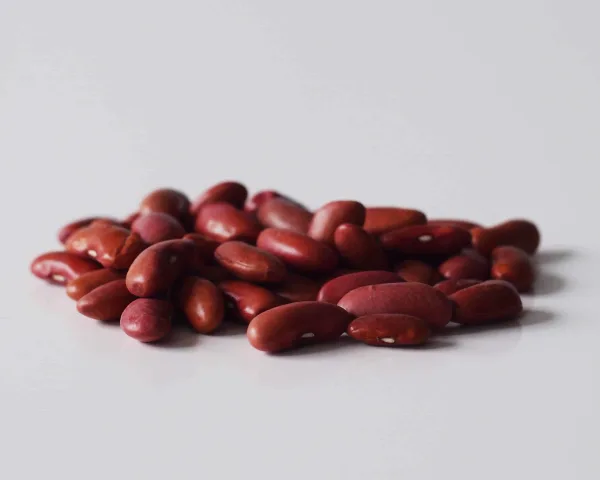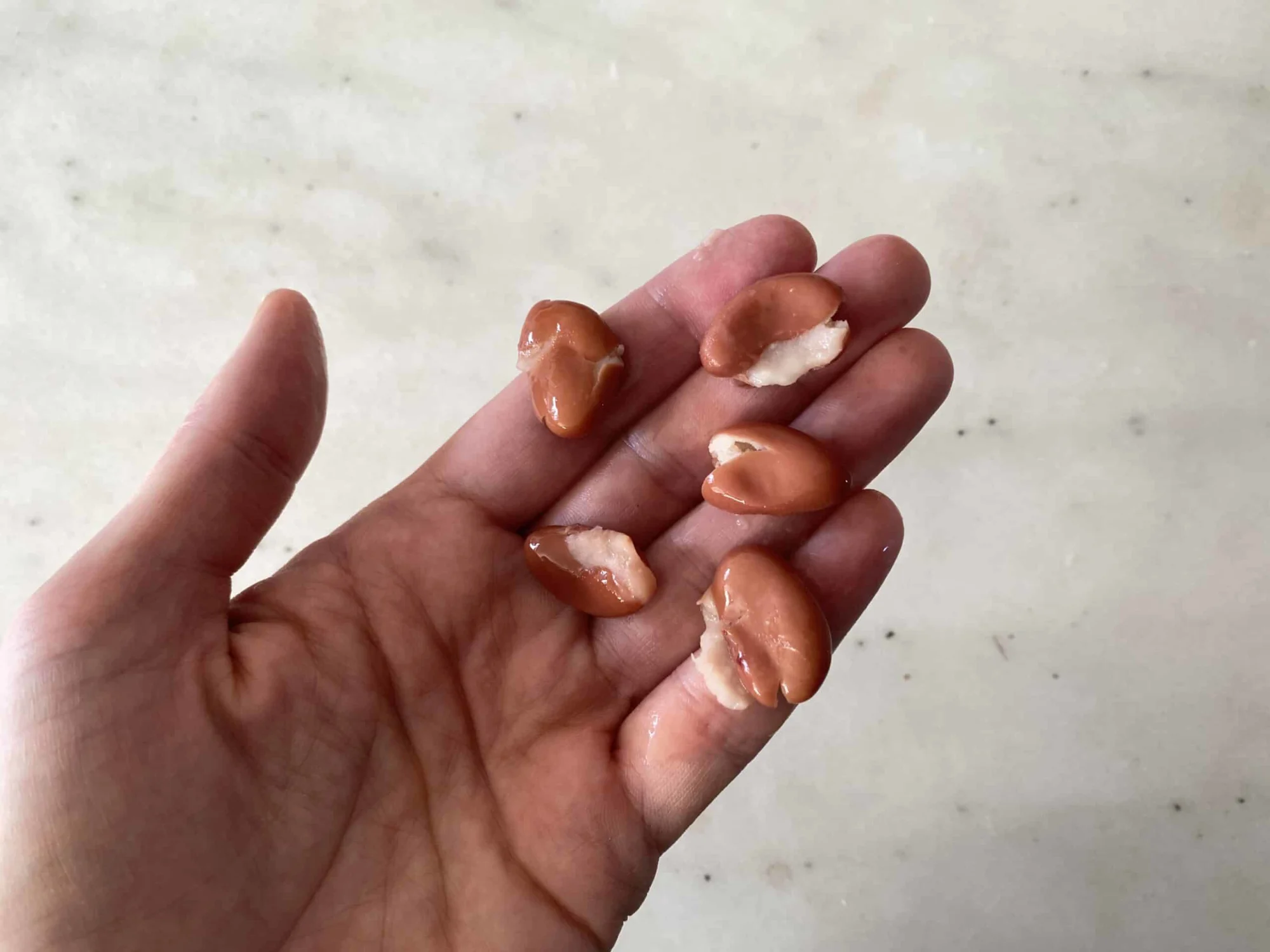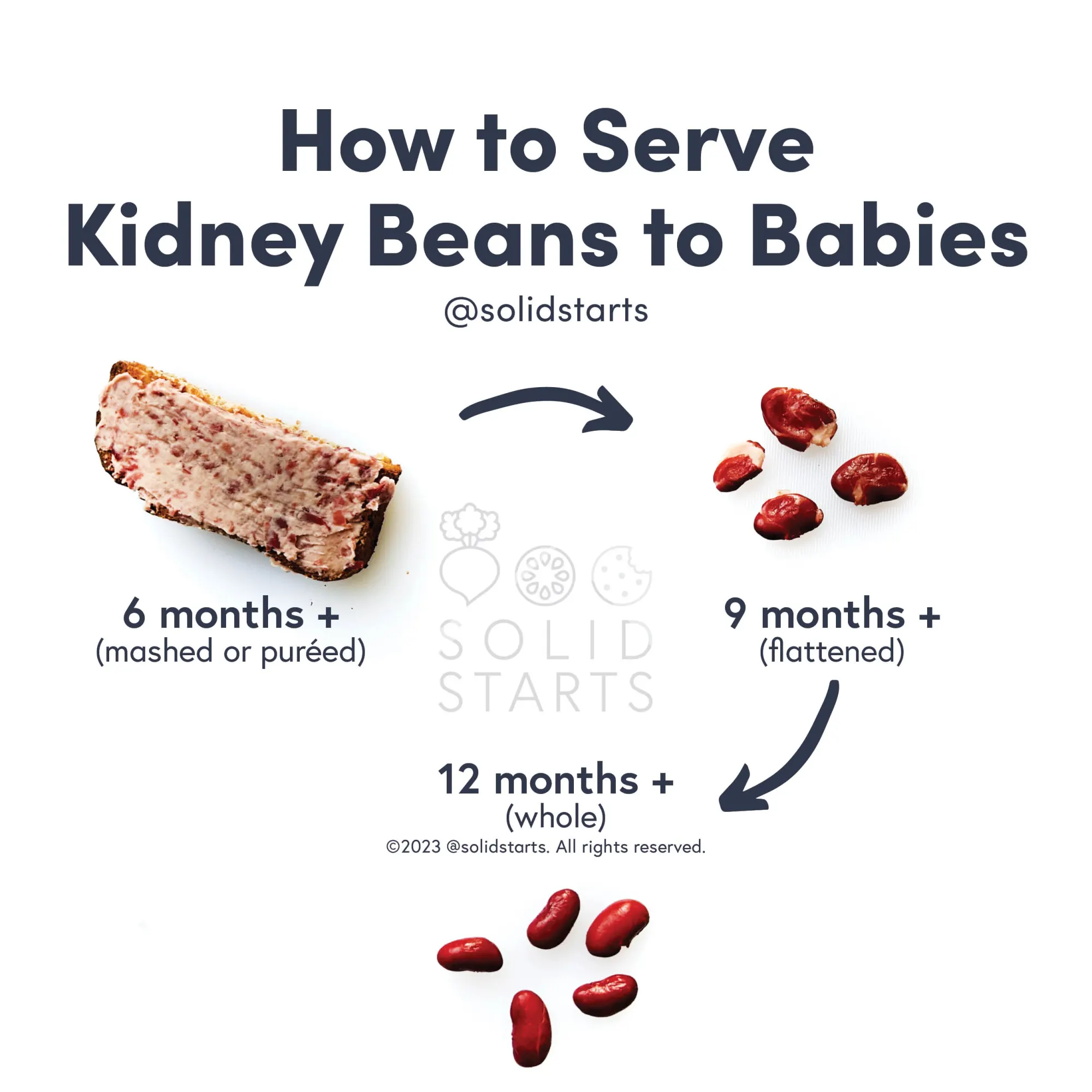Acceda a la base de datos First Foods® en Solid Starts App.
Leer másFrijoles rojos
Legumbre
Sugerencia de edades
6 meses
Alto contenido de hierro
Sí
Alérgeno común
No

When can babies have kidney beans?
¡Lo sentimos, esta página aún no está disponible en español! Estamos trabajando tan rápido como podemos para traducir todo nuestro contenido, gracias por tu paciencia y apoyo.
Kidney beans may be introduced as soon as baby is ready to start solids, which is generally around 6 months of age.
Kidney bean is a type of common bean—a sprawling family of legumes that originated in the Americas. Kidney bean was cultivated in South America before colonization and trade brought beans abroad. Today, the kidney bean has many names (barbunya, feijão vermelho, frijoles colorados, rajma, and surkh lobia, to name a few) and serves as an inexpensive source of protein and fiber for people around the world.
How do you serve kidney beans to babies?
Cada bebé se desarrolla a su propio ritmo, y las sugerencias que ofrecemos sobre cómo cortar o preparar determinados alimentos son generalizaciones para una amplia audiencia.
6 months old +:
Crush or blend cooked kidney beans into a textured mash or smooth paste. Feel free to stir in breast milk, formula, olive oil, butter, or yogurt. When introducing beans, start with a small amount and gradually increase portion sizes to minimize any digestive discomfort. Let baby scoop the mash or paste, and if help is needed, pre-load a spoon or thinly spread some mash on another food. Alternatively, share kidney beans from your chili, salad, or stew. Simply pick out some of the beans and mash them for baby.
9 months old +:
Babies with a developing pincer grasp (where the thumb meets the pointer finger) may graduate to whole kidney beans that are fully cooked until soft and gently flattened. Alternatively, continue serving mashed or pureed kidney beans.
12 months old +:
By this age, toddlers are typically able to handle whole kidney beans that are fully cooked until soft. To encourage self-feeding with utensils, spear a kidney bean with an age-appropriate fork and lay the utensil next to the food for the child to try to pick up. If help is needed, pass the utensil in the air for the child to grab from you. If serving a whole bean makes you nervous, continue to mash or flatten the beans.

Get baby’s caregivers on the same page with our guide, Baby-led Weaning with Daycare & Caregivers.
¡Lo sentimos, esta página aún no está disponible en español! Estamos trabajando tan rápido como podemos para traducir todo nuestro contenido, gracias por tu paciencia y apoyo.
Videos
Are kidney beans a choking hazard for babies?
Yes. Kidney beans are small, rounded, and can be firm, especially when raw or undercooked, qualities that can increase the risk of choking. To reduce the risk, prepare and serve kidney beans in an age-appropriate way as described in the How to Serve section. As always, make sure you create a safe eating environment and stay within an arm’s reach of baby during meals.
Learn the signs of choking and gagging and more about choking first aid in our free guides, Infant Rescue and Toddler Rescue.
Are kidney beans a common allergen?
No. Kidney beans are not considered to be a common allergen. However, cases of allergic reactions to red kidney bean have been reported, some of which have been severe. Phytohemagglutinin, a lectin protein, can trigger both toxic and allergic reactions to red kidney bean. Adequately cooking the beans can help to break down the protein and reduce the risk of reactivity.
Bean allergies have been reported in some patients with allergies to other legumes, including peanut and soybean (which are common food allergens). However, being allergic to one type of legume does not necessarily mean that an individual will be allergic to others, although the risk of more than one legume allergy can increase. Fortunately, most individuals with peanut or soy allergy are able to tolerate other legumes.
Individuals with allergies to tree pollen and/or Oral Allergy Syndrome (also called pollen-food allergy syndrome) may be sensitive to legumes, such as kidney beans. Oral Allergy Syndrome typically results in short-lived itching, tingling, or burning in the mouth and is unlikely to result in a dangerous reaction.
As you would when introducing any new food, start by offering a small quantity for the first few servings. If there is no adverse reaction, gradually increase the quantity over future meals.
Are kidney beans healthy for babies?
Yes. Kidney beans are rich in carbohydrates, fiber, and protein, in addition to calcium, choline, iron, folate, potassium, selenium, zinc, and vitamins B6 and K. Together, these nutrients support energy for baby’s movement and exploration, growth and development, diversity in baby’s gut microbiome, bone density, neurodevelopment, red blood cell health, electrolyte balance, hormone health, immunity, taste perception, metabolic processes, and more.
★ Tip: Try serving kidney beans with foods rich in vitamin C to help boost iron absorption in baby’s body, such as bell pepper, broccoli, cauliflower, peas or tomato.
Can babies have canned kidney beans?
Yes, babies can have canned kidney beans or fully cooked dried beans.
Are kidney beans safe for babies?
Yes, as long as the beans are cooked thoroughly (canned beans have already been cooked, so they don’t need to be cooked again). Undercooked beans can contain toxic compounds, such as phytohemagglutinin, that can lead to gastrointestinal upset and serious illness. Kidney beans in particular contain high amounts of this toxin. Boiling the bean for a minimum of 10 minutes has been found to destroy these compounds, though it is recommended to boil for at least 30 minutes until well-cooked to make sure. Slow cookers (such as Crock Pots) are not recommended as a method for cooking kidney beans, since they often do not adequately get hot enough to break down the toxin.
Other plant compounds nicknamed “antinutrients” such as lectins, oxalates, and phytates are also present in kidney beans. These compounds have gained the nickname “anti-nutrients” because they can decrease absorption of other specific nutrients, however they also break down during the process of soaking and cooking on high heat and are generally harmless in most individuals when consumed as part of a varied and balanced diet, so just make sure that kidney beans are fully cooked until tender before serving.
Do kidney beans need to be soaked before cooking?
No, although soaking dried kidney beans before cooking can help significantly reduce cooking time, as well as reduce the content of lectins and a gas-producing carbohydrate, raffinose, therefore making the bean easier to digest.
Here are a couple of soaking methods:
Overnight soak: Use a ratio of 1 lb (454 g) of dried beans and 10 c (2 ½ liter) water, and soak the beans in water for 4 or more hours or overnight. Drain and rinse the beans prior to cooking.
Hot soak method: Use a ratio of 1 lb (454 g) of dried beans and 10 c (2 ½ liter) water, and bring the mixture to a boil for 2-3 minutes. Turn off the heat, then soak for a few hours. Drain and rinse the beans prior to cooking.
Nuestro equipo
Escrito por
Consejos de expertos directo a tu bandeja de entrada
¡Suscríbete y recibe correos semanales con recetas, consejos y más!
Copyright © 2025 • Solid Starts Inc







